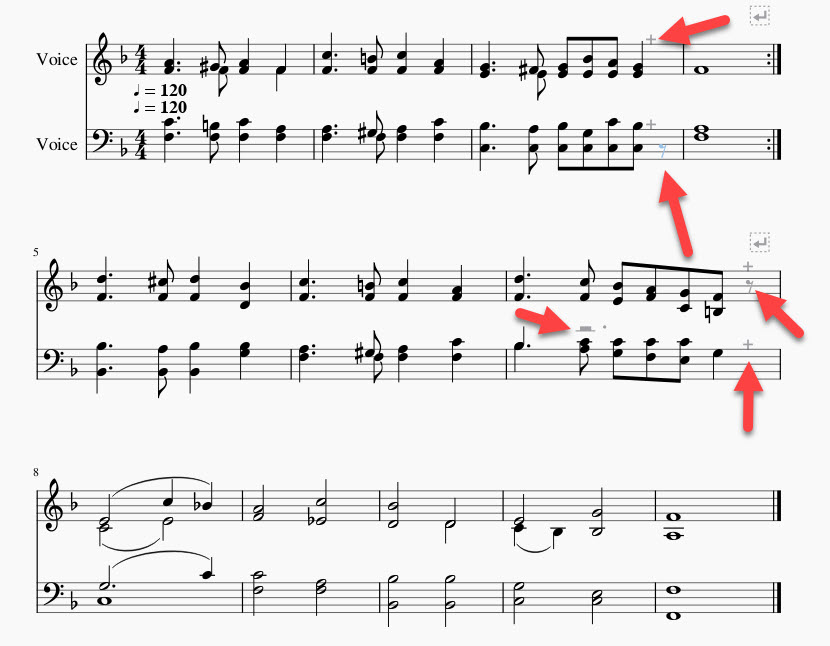

For example, in order to successfully swap in the third note you want, a dotted 32nd note trying to displace the latter portion of a 16th note, I'll have to turn that 16th note into a 64th note.Įven if you want to preserve all note starts and note lengths when transferring that dotted 32nd note, you have to resort to hacks (with their own readability issues) such as replacing that 16th note with a 64th note tied to a dotted 32nd note, then swapping that dotted 32nd note in. This is a piano solo arrangement of the song 'Red Like Roses' from the RWBY Volume 1 soundtrack. If you want to preserve note starts and possibly nothing else whenever you hit such a snag, you may need to edit notes in the voice you're swapping notes into to fit in the notes you're swapping out. MuseScore is available for download from Slackware.
Musescore red notes install#
And on Debian or similar: sudo apt install musescore. We put this natural sign to be sure that this is red as a G and not as a G flat. On Fedora or distributions based on Red Hat: sudo yum install musescore. So what often is done is that we put a courtesy accidental.
Musescore red notes software#
Neither of the colors show in printing and can be disabled via Edit -> Preferences -> Note Entry -> uncheck Color notes outside of usable pitch range. MuseScore is a scorewriter for Windows, macOS, and Linux supporting a wide variety of file formats and input methods. If you don't have MuseScore installed, it's probably in your distribution's software repository. To review, open the file in an editor that reveals hidden Unicode characters. FOSS Linux takes a quick look at MuseScore, a music notation app.MuseScore - Create, play and print beautiful sheet music FOSS Linux MuseScore is a music notation app with features like quick corrections, fast editing, reliable sharing, and provision of a uniform layout of sheet music. Red means they're technically not possible on the selected instrument. This file contains bidirectional Unicode text that may be interpreted or compiled differently than what appears below.

I'm afraid I'll have to defer to Creynders and his answer (copy and paste notes back and forth, or essentially do that by committing single notes to memory and deleting and adding them yourself) if you encounter those snags. Yellow just means that it's going to take a more experienced player to play those notes. This may hit snags if the note you want to swap in is a different note length than at least one note in the equivalent place in the voice you want to swap that note into, such as swapped-in notes displacing swapped-out notes or the notes refusing to swap in the first place. You can even exchange the voices of (two voices' worth of) notes by selecting the range you want to exchange voices of, going to the menu bar, and finding which voices you want to exchange in the resulting dropdown menus (further details in ).
Musescore red notes how to#
Naively, you can click on any individual note and change which voice that particular note is in by clicking on the voice label you want (details on how to do that are in ).


 0 kommentar(er)
0 kommentar(er)
